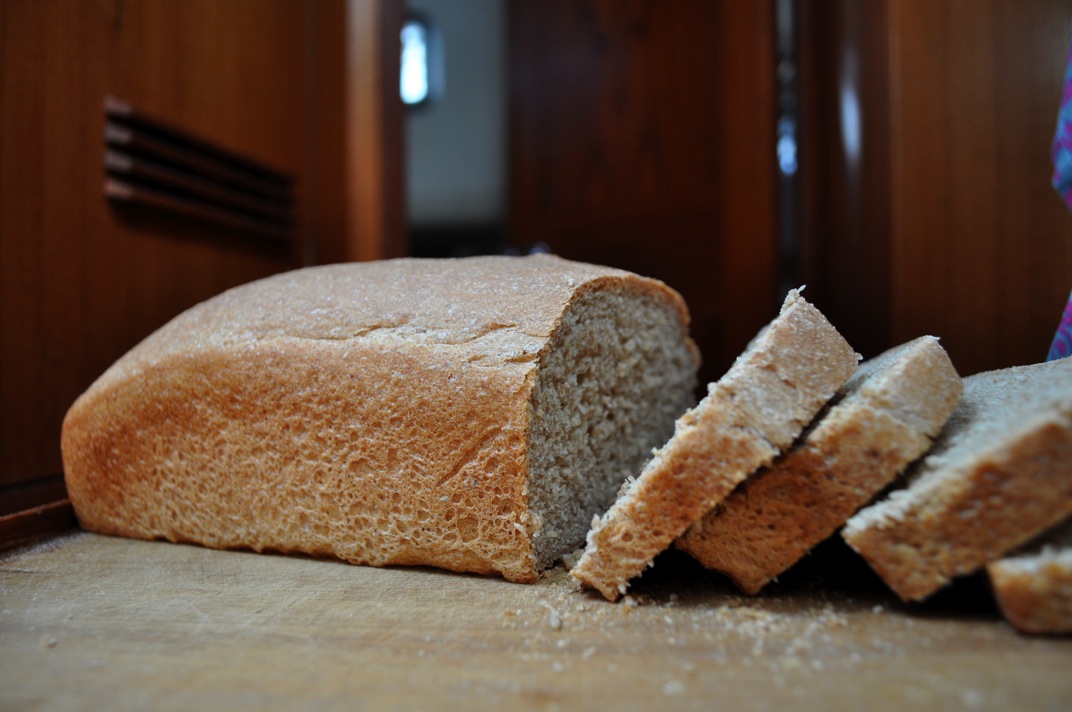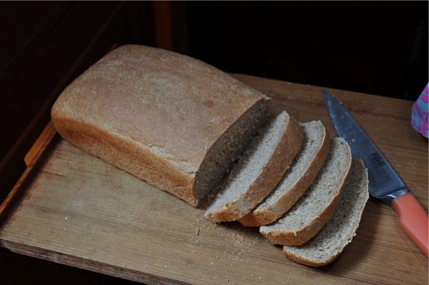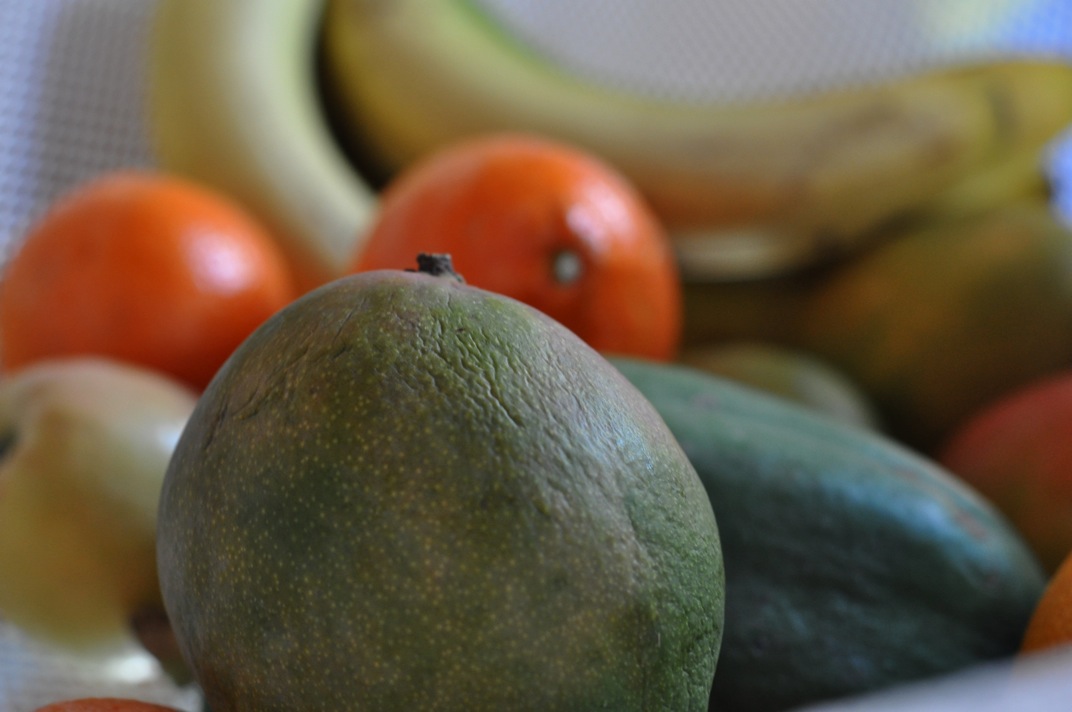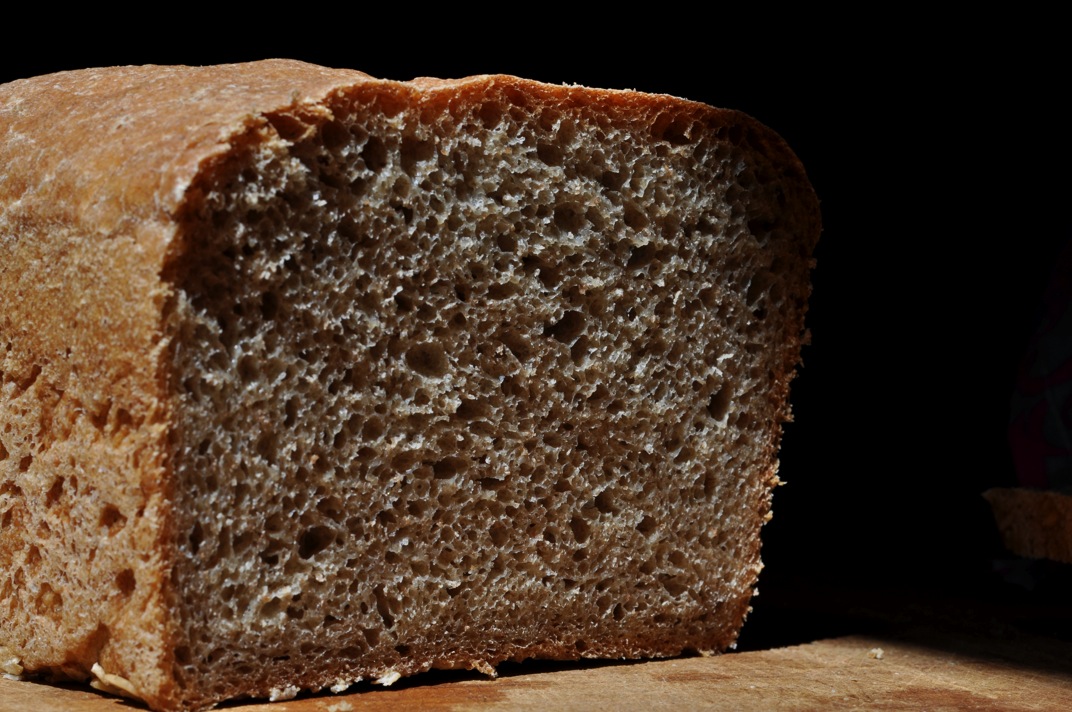
I love what I’m doing. I love being on the water and being free. That said, I really miss full-size kitchens, high-speed internet, and grocery stores. I’m torn between loving this life and trying to do things that don’t come easily on a boat.
At least I have bread. I find comfort and redemption in my every-other-day baking routine. I may not be able to put together a fresh, green salad but I can bake a loaf of delicious bread. After two astoundingly successful loaves my bread ego has risen to match their lofty heights.
What began as a cookbook recipe is now decidedly my own recipe. I’ve changed flour types, baking pans, and techniques to suit my taste and needs. After experimenting with the French Bread and Tuscan Loaf in Joy of Cooking, I found the most success with my Tuscan Loaf-inspired creation. With only my bare hands and some ingredients I carried here from Maine, I produced something with crust, springiness, chewiness, flavor, and nutrition!
I don’t know what Lee and I love more: the smell of bread baking overpowering the usual boat smells or sandwiches made with fresh, warm slices. I like my first slices topped with tahini and Lee prefers butter.
I’ll start with the original recipe, then give my own. When I made my loaf yesterday I weighed the flour so I am listing those weights as well.
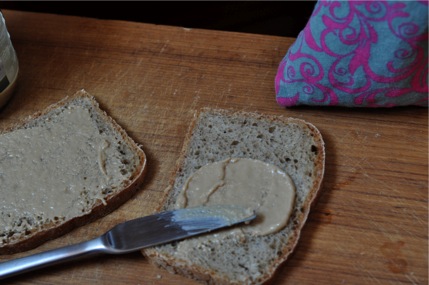
Tuscan Loaf
From Joy of Cooking by Irma S. Rombauer and Marion Rombauer Becker
Mix in a large bowl:
2 cups lukewarm water (85 F)
1 cup whole wheat flour
3/4 cup all-purpose flour
1 package (2 1/2 teaspoons) active dry yeast
Cover the bowl with plastic wrap and let rise at room temperature for 8-12 hours.
Stir in:
2 1/2 cups all-purpose flour
1 tablespoon olive oil
Adding up to 1 cup more flour as needed, mix until a soft, slightly sticky dough forms.
Knead by hand for 15 minutes (dough should be very elastic but a little sticky).
Transfer dough to oiled bowl and turn once to coat.
Cover bowl with plastic wrap and let rise and room temperature until doubled in volume (2 hours).
Punch down dough and knead briefly.
Shape into an oval loaf by stretching and tucking dough underneath itself.
Lightly oil a baking sheet and sprinkle it with cornmeal.
Place loaf on baking sheet, brush surface with oil and cover with plastic wrap.
Let rise at room temperature until more than doubled (1 1/2 hours).
When the imprints of your fingers remain in the loaf when pressed, it is ready to bake.
Preheat oven to 425 F. Set a baking pan on the lowest oven rack.
Score the top of the loaf with a crosshatch pattern and place it in the oven.
Immediately add 1 cup hot water to the baking pan and close the oven.
Bake until the bottom of the loaf sounds hollow when tapped (about 40 min).
Cool completely on a rack.

(I still can’t believe I can make bread) Bread
Adapted from Tuscan Loaf above
Mix in a large bowl:
2 cups lukewarm water (85 F)
1 cup whole wheat flour (4 oz)
3/4 cup all-purpose flour (3.8 oz)
1 package (2 1/2 teaspoons) active dry yeast
2 teaspoons vital wheat gluten
Cover the bowl with plastic wrap and let rise at room temperature overnight. (I put mine in a cupboard that gets quite warm during the day)
The next morning, stir last nights mixture and add:
1 cup wheat flour (4 oz)
1 cup all-purpose flour (4.2 oz)
1/2 cup buckwheat flour (3.7 oz)
2 teaspoons vital wheat gluten
1 tablespoon olive oil
Adding up to 1 cup more flour (I added 4-5 oz this time) as needed, mix until you have soft, sticky dough.
Knead by hand for 15 minutes. The dough should not quite come un-stuck from your hand.
Transfer dough to oiled bowl and turn once to coat.
Cover bowl with plastic wrap and let rise in a warm place until doubled in volume (around 2 hours – I’ve left it for less and more time).
Punch down dough and knead briefly.
Lightly oil a loaf pan and sprinkle a pinch of oats over the bottom.
Shape dough into a loaf and place in pan.
Brush the top of the loaf with oil, cover lightly with plastic wrap, and leave in a warm place to rise until the top of the loaf is 1/2 to 1 inch above the edge of the pan.
Preheat oven to 425 degrees F.
Place loaf on center rack and bake for about 40 minutes, or until the top and bottom sound hollow when tapped.
Remove bread from pan and cool on a wire rack.

